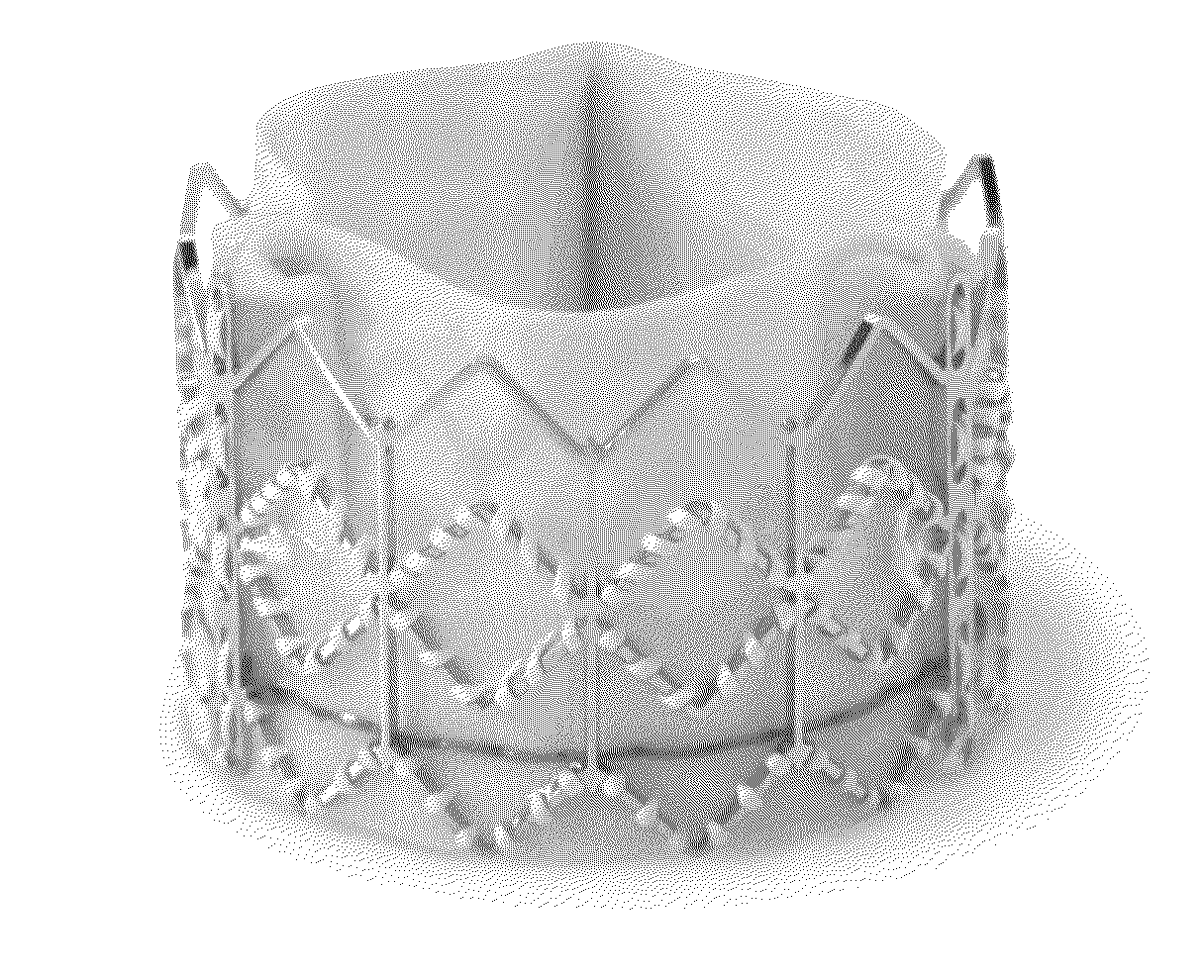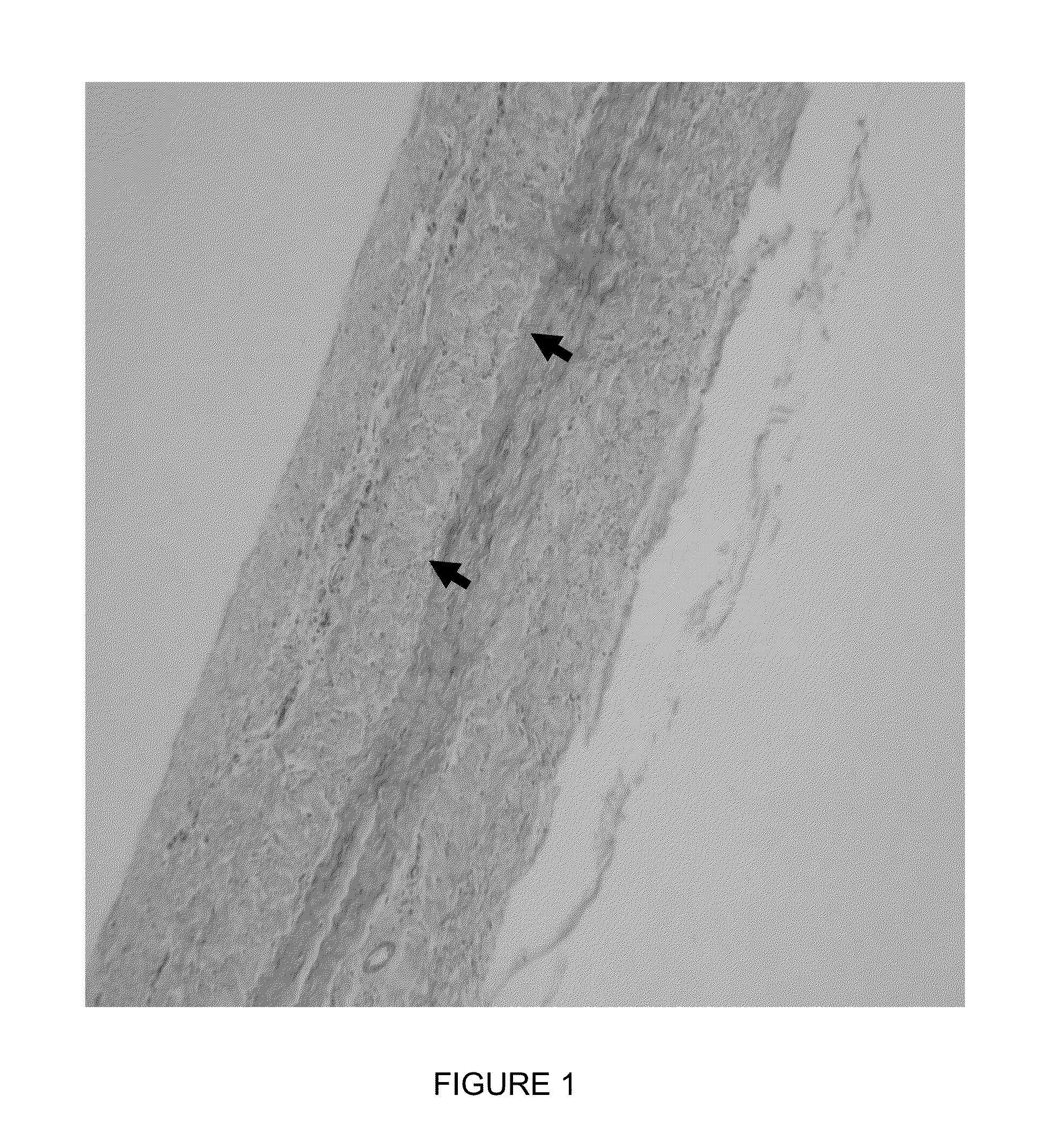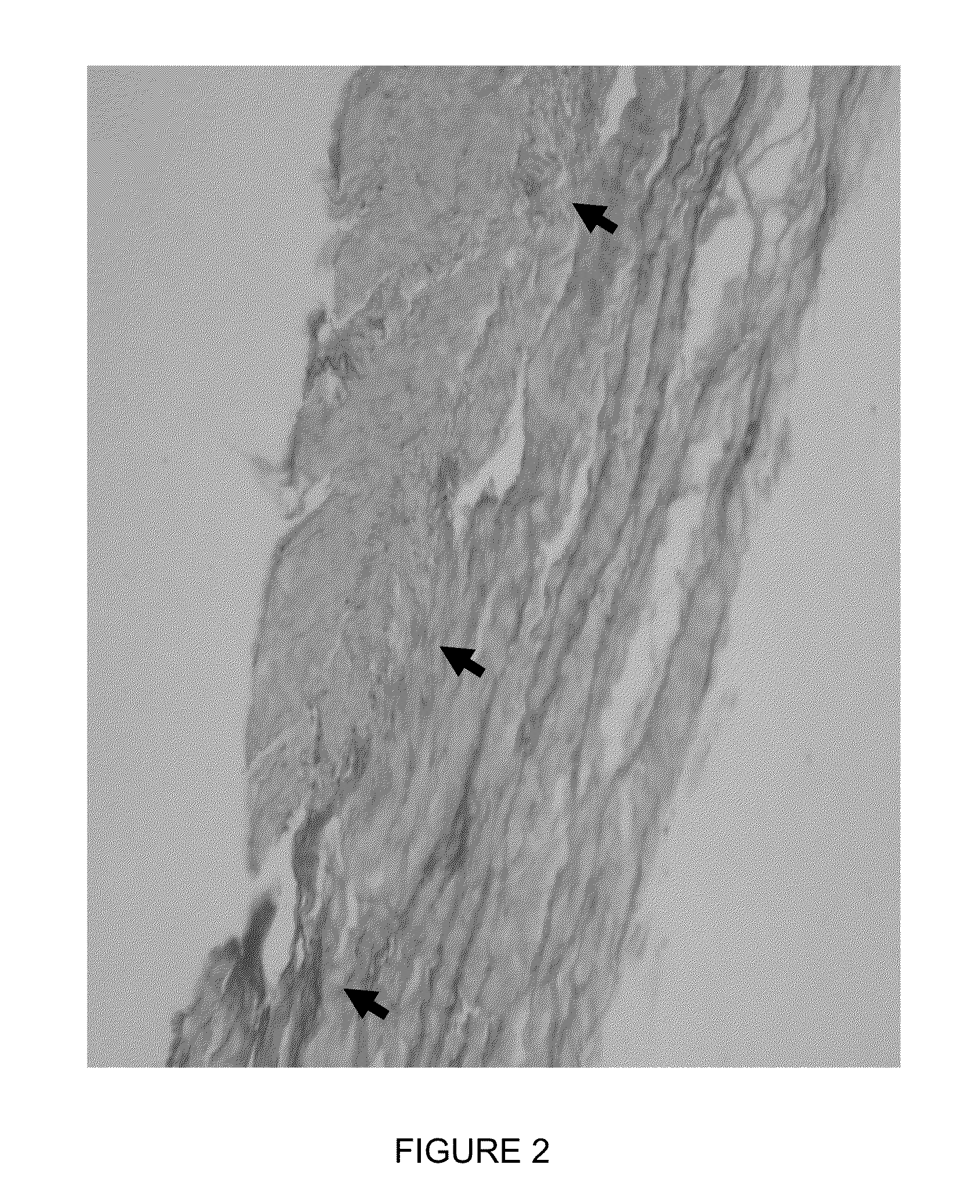Biomaterials with enhanced properties and devices made therefrom
a biomaterial and enhanced technology, applied in the field of new biomaterials with enhanced properties, can solve the problems of reducing functional stresses through special tissue properties and combinations, affecting the quality of leaflet tissue, and reducing collagen degradation with time, etc., to achieve the effect of reducing thickness, reducing the packing of the valve, and enhancing strength
- Summary
- Abstract
- Description
- Claims
- Application Information
AI Technical Summary
Benefits of technology
Problems solved by technology
Method used
Image
Examples
example 1
Percutaneous Bioprosthetic Heart Valves
[0046]As discussed previously the advantages of neonatal bovine pericardium over the prior art lies in the increased elastin content, altered collagen types, and ultra-thinness which, taken together, allow the successful creation of minimally invasive percutaneous heart valve technologies with enhanced durability and improved hemodynamics, compared to the prior art. Such a device is fabricated from sourcing neonatal bovine pericardial tissues from juvenile animals, 1 year of age or less, and preferably less than 6 months old, less than 3 months old, and / or less than 30 days old. Even more desirably, the device is fabricated from neonatal bovine pericardium sourced from animals which are 30 days old or less and that exhibit the characteristics and properties defined herein.
[0047]The process by which the tissue characteristics and parameters of the present invention are utilized can vary depending on the ultimate use of the tissue and / or the devi...
example two
Traditional Surgical Valves
[0053]A second example of the utility of the embodiments described herein is in the application of these improved tissues to the development of traditional surgically-placed bioprosthetic heart valves. In this example, both neonatal and adult bovine pericardial tissues would be advantageous over the prior art, as well as the use of neonatal bovine aortic valve isolations.
[0054]In the case of the bovine pericardial heart valve, surgical valves can be fabricated using methods known to those skilled in the art, and as described above in example one. Further, these valves may be treated with a process to mitigate calcification of the tissue, as reducing calcification is a key objective in obtaining a more durable, long-lasting surgical valve. For example, one such calcification mitigation treatment is to use AOA (alpha-amino oleic acid) as a capping agent to reduce reactivity of residual aldehydes after the glutaraldehyde fixation step. Such a treatment is des...
example three
Patches with Improved Properties
[0057]A number of applications of the present invention yield improved tissues with enhanced properties of strength, durability, flexibility, and reduced thickness such that prior art tissues can readily be replaced if from an existing procedure or protocol. For example, a pericardial patch can be used for general surgical reconstruction in the heart, the vasculature, or in other organ systems such as the bladder, peritoneum, or abdominal wall where a requirement exists for flexibility strength, durability, and lack of immunogenicity. Such patches can be chemically crosslinked or simply disinfected, using techniques known in the art. Patches may be treated to alter their calcification properties, promote adhesion, or minimize adhesion, as required for the desired application. Patches may even be treated with two different treatments, for example with an adhesive surface on one side, and an anti-adhesive treatment on the other side. The adhesive surfac...
PUM
 Login to View More
Login to View More Abstract
Description
Claims
Application Information
 Login to View More
Login to View More - R&D
- Intellectual Property
- Life Sciences
- Materials
- Tech Scout
- Unparalleled Data Quality
- Higher Quality Content
- 60% Fewer Hallucinations
Browse by: Latest US Patents, China's latest patents, Technical Efficacy Thesaurus, Application Domain, Technology Topic, Popular Technical Reports.
© 2025 PatSnap. All rights reserved.Legal|Privacy policy|Modern Slavery Act Transparency Statement|Sitemap|About US| Contact US: help@patsnap.com



